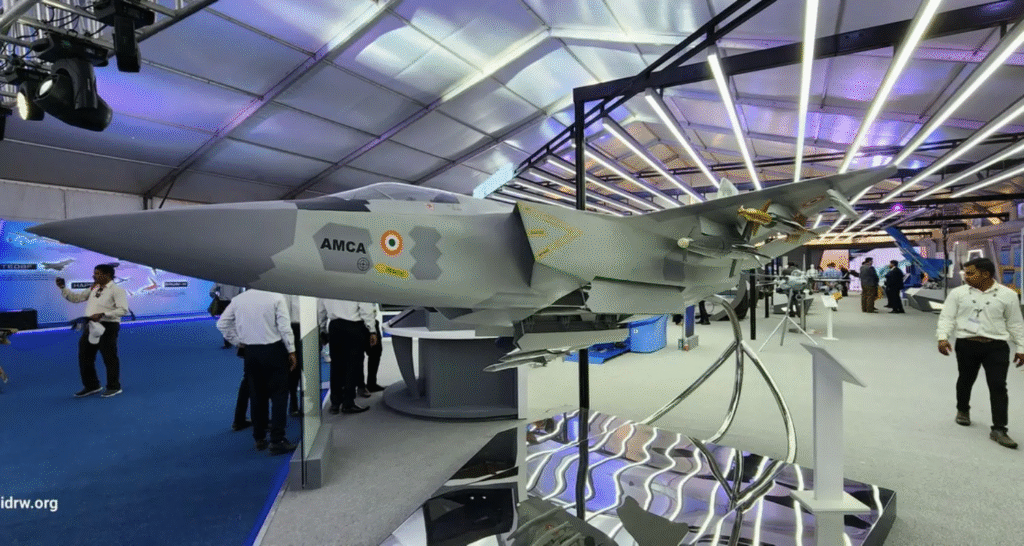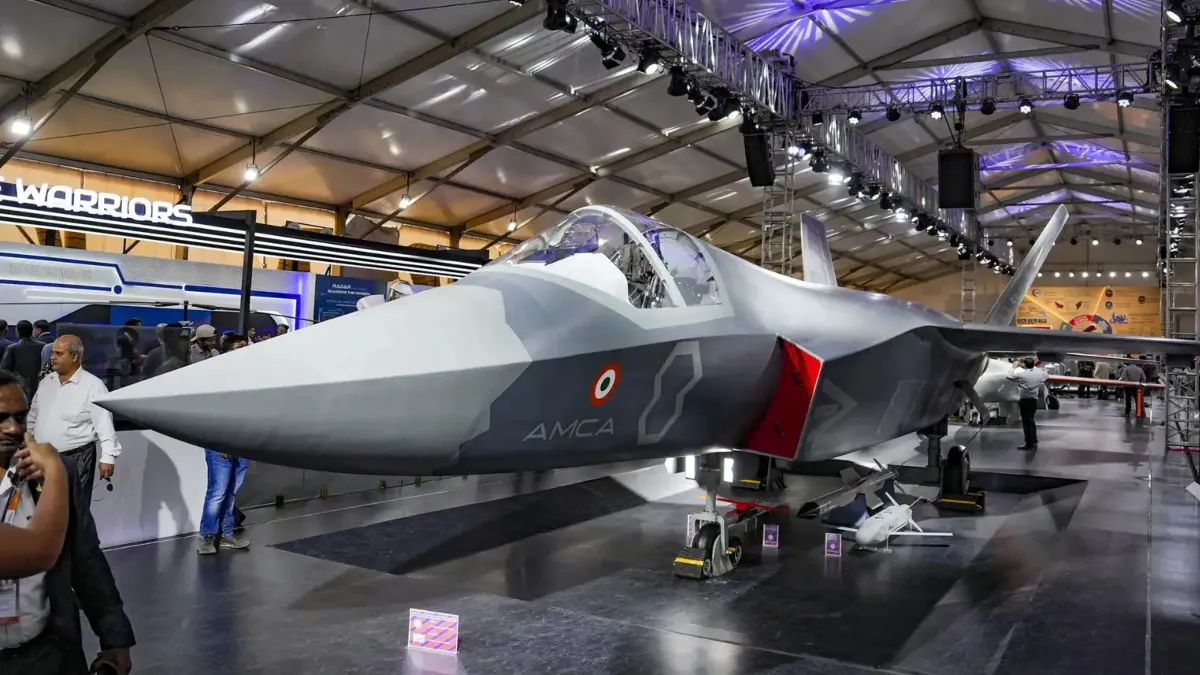
India has embarked on one of its most ambitious defense projects in recent history with the government’s approval of the Advanced Medium Combat Aircraft (AMCA) program. This strategic initiative aims to develop a fifth-generation stealth fighter jet indigenously, marking a significant step in India’s quest for military self-reliance. More than just an aircraft, the AMCA symbolizes the nation’s aspiration to emerge as a formidable global aerospace and defense powerhouse.
The Essence of Fifth-Generation Fighter Jets
To appreciate the transformative potential of the AMCA, it is crucial to understand what defines a fifth-generation fighter jet. Unlike earlier generations, these fighters integrate multiple advanced technologies into a single platform. Stealth is at the core, enabling the aircraft to evade detection by enemy radar through sophisticated shaping and radar-absorbent materials. This stealth capability allows fighters to operate behind enemy lines without being easily targeted, providing a decisive advantage in combat.
But stealth is just one part of the equation. Fifth-generation jets feature supermaneuverability, allowing pilots to execute complex aerial maneuvers with precision and agility, making the aircraft lethal in dogfights. Coupled with state-of-the-art avionics—comprising advanced radar systems, electronic warfare capabilities, and sensor fusion—these fighters can detect, track, and engage threats at great distances. Furthermore, the integration of network-centric warfare capabilities ensures that these jets operate seamlessly within a broader battlefield ecosystem, sharing real-time data with other assets for coordinated attacks.
Globally, only a handful of nations have mastered this technology. The United States leads with the F-22 Raptor and the F-35 Lightning II, while China and Russia have made strides with the Chengdu J-20 and Sukhoi Su-57 respectively. For India, entering this elite club through the AMCA is a monumental leap forward.
The AMCA Program: India’s Indigenous Vision for Air Dominance
The Advanced Medium Combat Aircraft program is a result of years of collaborative research, engineering, and strategic foresight spearheaded by the Aeronautical Development Agency (ADA) in partnership with Hindustan Aeronautics Limited (HAL). The design philosophy behind the AMCA is to produce a multirole stealth fighter capable of fulfilling diverse operational roles—ranging from air superiority missions to ground attack and electronic warfare.
The AMCA is a twin-engine aircraft that incorporates stealth features such as internal weapon bays, radar-absorbing materials, and an airframe shaped to reduce radar cross-section. These design aspects are complemented by cutting-edge avionics that enable superior situational awareness and threat response. Notably, the AMCA aims to integrate indigenous technologies for its sensors, communications, and weapon systems, minimizing dependency on foreign suppliers.
The program reflects India’s broader ‘Make in India’ initiative, seeking to transform the defense sector by nurturing homegrown technology, stimulating the domestic aerospace ecosystem, and fostering private sector participation alongside established public enterprises.
Strategic Importance for India’s National Security
The induction of a fifth-generation stealth fighter like the AMCA is poised to redefine India’s defense landscape. The strategic benefits are multifold and resonate deeply with India’s security imperatives:
Stealth and Tactical Advantage: In modern aerial warfare, the ability to strike undetected is paramount. The AMCA’s stealth technology will allow the Indian Air Force (IAF) to penetrate dense enemy air defenses, conduct precision strikes, and retreat safely—capabilities that significantly reduce pilot risk and increase mission success rates.
Technological Independence: Historically, India has relied on imported aircraft such as the Russian Sukhoi Su-30MKI and French Rafale fighters. While these platforms are formidable, foreign procurement often entails vulnerabilities related to supply chain disruptions and geopolitical considerations. Developing the AMCA indigenously empowers India to maintain operational autonomy and secure long-term sustainability in its defense capabilities.
Force Multiplication: Equipped with advanced avionics, electronic warfare suites, and an array of smart weapons, the AMCA is expected to enhance the IAF’s combat readiness. This enhancement is critical given the complex security dynamics in South Asia, including challenges along the northern borders and maritime interests in the Indian Ocean.
Boost to Defense Manufacturing: Beyond military advantages, the AMCA program stimulates the domestic defense manufacturing sector, generating jobs, promoting technological innovation, and encouraging research and development across related industries.
Technological and Developmental Challenges
While the promise of the AMCA is immense, realizing this vision involves surmounting significant technical and logistical hurdles. Fifth-generation fighter technology demands mastery over multiple advanced disciplines. For example, developing an active electronically scanned array (AESA) radar, capable of tracking numerous targets simultaneously with low detectability, requires sophisticated electronics and software engineering.
Similarly, the aircraft’s stealth design necessitates expertise in advanced composites, radar-absorbing coatings, and precision manufacturing techniques. India’s aerospace industry is continuously evolving to meet these exacting standards, investing heavily in research institutions and manufacturing capabilities.
One of the critical challenges lies in developing a powerful, reliable indigenous engine. The engine must deliver supercruise capability—sustained supersonic flight without afterburners—while maintaining efficiency and stealth. India’s Gas Turbine Research Establishment (GTRE) has made progress with the Kaveri engine project, but further advancements and collaborations may be needed to meet the AMCA’s powerplant requirements.
Additionally, integrating sophisticated avionics, electronic warfare systems, and weaponry demands a harmonized approach across multiple stakeholders—government agencies, defense research organizations, private industry, and foreign technology partners.
Project Timeline and Future Prospects
The AMCA program’s journey began over a decade ago with conceptual studies and design work. With the government’s recent approval, prototype development is accelerating. The first prototype is expected to take flight by 2030, following extensive wind tunnel testing and simulations.
The testing phase will be rigorous, involving evaluations of stealth characteristics, flight performance, weapon integration, and electronic warfare capabilities. Only after successfully clearing these milestones will the AMCA enter mass production, with the Indian Air Force targeting an initial fleet of over 100 aircraft.
Midway Title: The Global Context of Fifth-Generation Fighters
To fully grasp the significance of India’s AMCA program, it is helpful to place it within the global landscape of fifth-generation fighter development.
The United States pioneered this category with the F-22 and F-35, aircraft that have set the benchmark for stealth, sensor fusion, and multirole flexibility. These platforms enjoy combat-proven status and extensive operational deployment, supported by large defense budgets and mature aerospace ecosystems.
China’s Chengdu J-20, unveiled in the mid-2010s, represents Beijing’s effort to close the technological gap with the US. While initially focusing on stealth and long-range capabilities, the J-20 continues to evolve with upgrades in avionics and engines.

Russia’s Sukhoi Su-57 also brings advanced features, particularly in maneuverability and electronic warfare, though it faces production scale challenges.
Against this backdrop, India’s AMCA stands out as a homegrown effort tailored to regional strategic needs. By focusing on indigenous innovation and adaptability, the AMCA could emerge as a cost-effective yet technologically sophisticated alternative for India and potentially other friendly nations seeking fifth-generation capabilities.
Regional Security Dynamics and the Indo-Pacific
The Indo-Pacific region has become a central theater for geopolitical competition, with rising military investments by major powers. China’s assertiveness in the South China Sea, along with its growing naval and aerial capabilities, presents challenges to regional stability. India, with its strategic location and interests spanning land and maritime domains, must ensure credible deterrence and rapid response capabilities.
The AMCA’s induction will bolster India’s ability to safeguard its borders and maritime zones, enhancing surveillance, reconnaissance, and strike capabilities. This is crucial for protecting critical infrastructure, trade routes, and asserting India’s role as a security provider in the region.
Furthermore, the AMCA can contribute to India’s strategic partnerships through joint exercises, technology sharing, and potential exports, fostering stronger defense ties with countries sharing mutual security interests.
Collaboration and Export Potential
India’s defense export ambitions align closely with the AMCA’s development. As the aircraft matures, there is a realistic prospect of marketing it to friendly countries looking for advanced yet affordable fighter jets. Nations in Asia, Africa, and Latin America could benefit from a fifth-generation fighter that combines modern capabilities with a competitive price point.
The government’s focus on enhancing defense exports through streamlined policies and ‘Make in India’ incentives provides a conducive environment for the AMCA to become a flagship export product.
Moreover, international collaborations in avionics, engine technology, and materials could accelerate the AMCA’s development and expand its appeal in the global market.
Midway Title: Beyond the AMCA – The Future Trajectory of India’s Aerospace Ambitions
The AMCA project is a critical piece of India’s broader aerospace vision. Success in this endeavor will catalyze growth in multiple allied sectors, creating a virtuous cycle of innovation and industrial capability.
Building a Robust Aerospace Ecosystem
India’s progress in aviation technology depends on cultivating a vibrant ecosystem comprising research institutions, manufacturing units, testing facilities, and skilled professionals. Continued investment in infrastructure and cutting-edge laboratories is essential to support next-generation programs beyond the AMCA, including unmanned systems, spaceplanes, and hypersonic vehicles.
Private Sector and Startups: Engines of Innovation
Increasingly, private companies and startups are playing a crucial role in India’s defense ecosystem. Their agility and innovation complement the capabilities of established public entities like HAL and ADA. Companies such as Larsen & Toubro and Bharat Forge are already contributing to components and subsystems for the AMCA, showcasing the benefits of a collaborative industrial model.
The government’s initiatives to ease defense production norms and encourage joint ventures create fertile ground for private enterprises to thrive, enhancing competitiveness and efficiency.
Inspiring the Next Generation of Aerospace Engineers
The AMCA program resonates deeply with India’s youth, inspiring a new generation of engineers and scientists passionate about aerospace and defense technologies. Educational institutions are increasingly integrating advanced curricula in aerospace engineering, robotics, and electronics, ensuring a steady flow of talent.
Furthermore, government scholarships, innovation challenges, and research grants encourage students to pursue careers in defense research and contribute to national projects.
Midway Title: The Road Ahead – A Bold Vision for India’s Defense Sovereignty
India’s pursuit of the AMCA is not merely about developing a state-of-the-art fighter jet; it represents a comprehensive strategy to assert sovereignty, technological independence, and strategic deterrence.
While challenges remain—technical complexity, cost overruns, timelines—the nation’s commitment is unwavering. The program embodies the spirit of ‘Atmanirbhar Bharat’ (self-reliant India), highlighting how innovation, collaboration, and persistence can overcome even the most formidable obstacles.
When the AMCA finally takes to the skies, it will be more than a machine. It will symbolize decades of ambition, the dreams of countless scientists and engineers, and a nation’s resolve to protect its people and interests.
This aircraft will position India not just as a consumer of military technology but as a creator and innovator on the global stage, contributing to peace and stability through strength and diplomacy.
In conclusion, the Advanced Medium Combat Aircraft program is poised to transform India’s defense capabilities profoundly. It marks a new chapter in the country’s aerospace journey, offering a glimpse of a future where India is a key player in global security and technological excellence.

